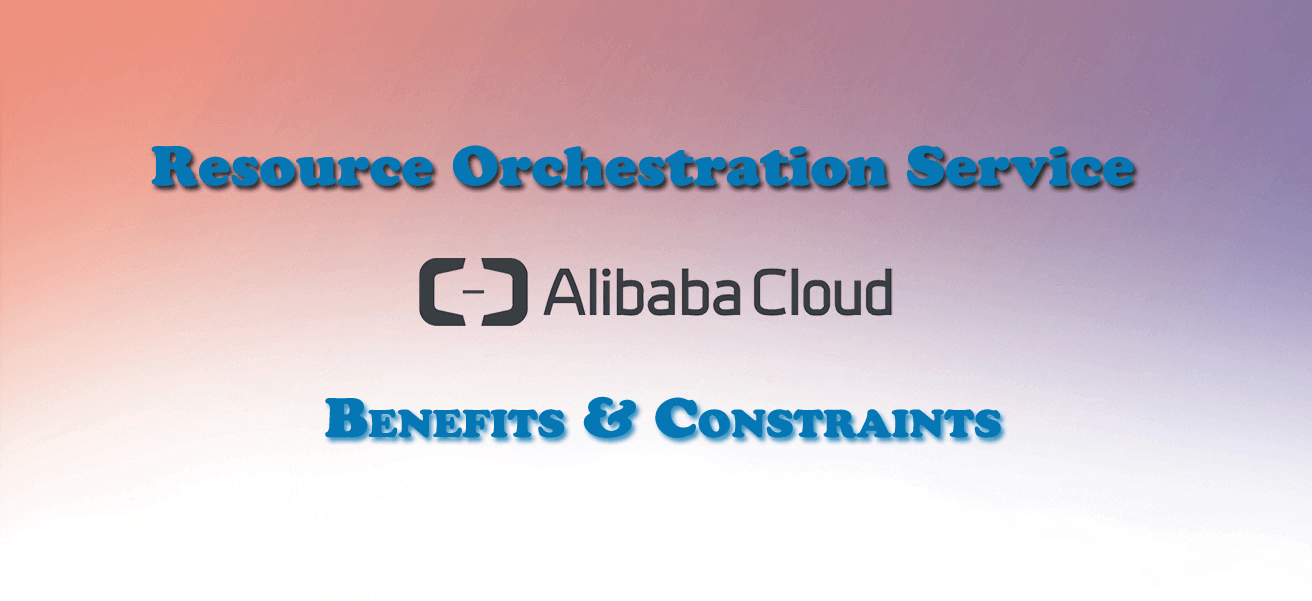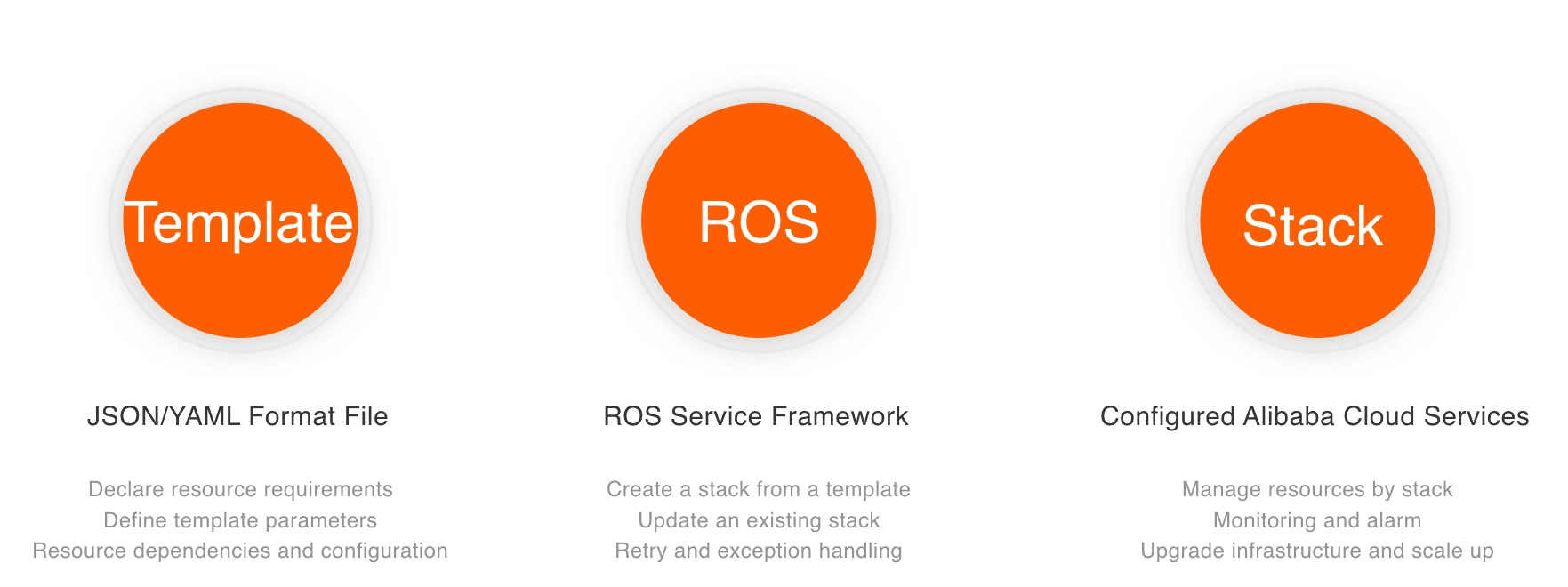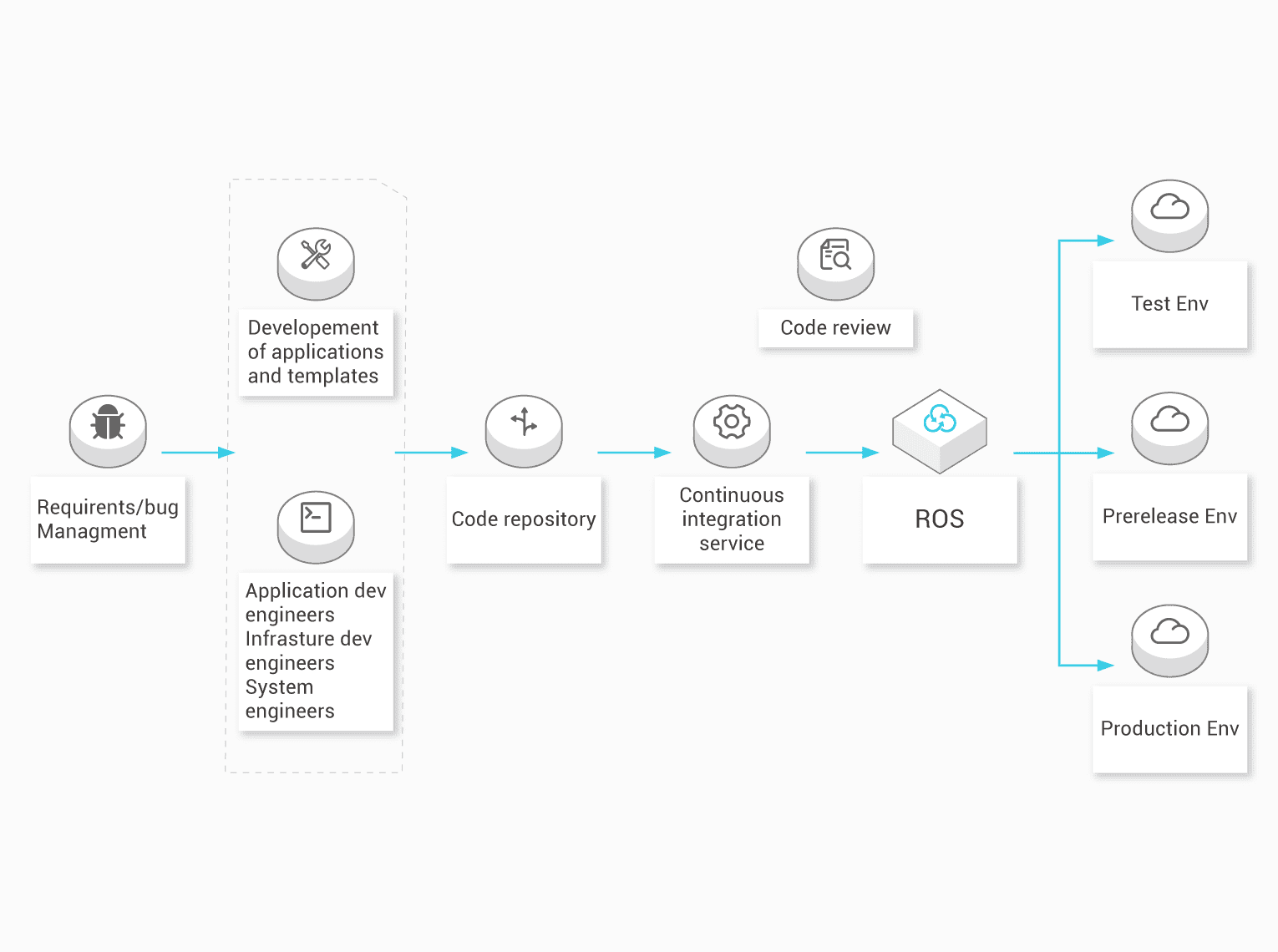What is Resource Orchestration Service (ROS), Benefits & Constraints
Alibaba Cloud Resource Orchestration Service (ROS) is a service that helps you simplify the cloud computing resource management and automate O&M.
Alibaba Cloud Resource Orchestration Service (ROS) is a service that helps you simplify the cloud computing resource management and automate O&M. After compiling a resource stack template, define what cloud resources you need, the dependency between the resources, and the resource configurations.
With the orchestration engine, ROS can automatically create and configure all resources for automatic deployment, operation, and maintenance according to your template. An orchestration template is a text file in JSON format that you can read and edit at any time. You can compile your template in JSON directly, or you can use Visual Editor in the ROS console to compile the template more visually.
You can control the template version with tools such as SVN or Git. You can also enable IAC (Infrastructure as Code) using API, SDK, and other methods to integrate the orchestration capabilities of ROS into your own applications.
You May Also Like: How to Set Up Alibaba Cloud Kubernetes Cluster Monitoring with Helm and Prometheus Operator
The resource orchestration template also provides a standard delivery method for resources and applications. You can use the template to deliver integrated systems and solutions that include cloud resources and applications. Independent software vendors (ISV) can use such delivery method to easily integrate Alibaba Cloud resources with their own software systems for consistent delivery.
ROS manages cloud resources in groups. A group of resources is a resource stack. Therefore, cloud resources can be created, deleted, modified, and cloned in groups. In DevOps practices, you can easily clone, develop, and test the environments, simplifying the overall migration and scaling of applications.
![ROS]()
Resource Orchestration Service Benefits
The Resource Orchestration Service (ROS) allows you to model and configure your Alibaba Cloud resources. After you create a resource stack template that defines your required resources (for example, ECS instances, VPC, ApsaraDB for RDS instances and others), ROS creates and configures these resources based on the template. ROS frees you from creating and configuring the resources one by one. ROS has the following benefits.
Automate resource orchestration
With a resource stack template, which includes the information of the resources and relationships among the resources, ROS creates, deploys, and configures the resources automatically, and manages the lifecycle of the cloud resources. The standardized revision control and resource tracking simplify the resource management. With APIs and SDKs, ROS integrates the resource stack with automatic O&M capacities.
Simplify resource management
If you want to create a scalable web application with backend databases or a cluster consisting of dozens of ECS instances, you must use ECS, ApsaraDB for RDS, Server Load Balancer, VPC, and Auto Scaling resources provided by Alibaba Cloud. Without ROS, you must create and configure these resources one by one, and then configure the combination between resources, to make sure that the application runs smoothly. The whole process increases the complexity and time cost of using the cloud resources.
Using ROS, you can:
- Minimize the complexity and time cost for resource creation and configuration by creating or modifying a resource orchestration template. The template lists the attributes (type, configuration, and quantity) and dependencies of the required resources. Then ROS parses this template, creates resources based on the dependencies and parameters, and configures the combination between resources, which guarantees that all resources run properly in accordance with the template description.
- Modify the template to adjust the resources and to meet your business requirements.
- Delete all the resources with a single click.
- Perform health check for your resources with a single click.
Fast and complete resource copy
After you create a resource stack for a web application using ROS, you can reuse the resource orchestration template to copy the group of resources quickly. Because the template records the attributes and dependencies of all resources, related configuration is not required during the resource copy.
Also Read: What is Container Service for Kubernetes, Advantage and Architecture
Combine multiple Alibaba Cloud products and services
Using ROS, you can combine the key Alibaba Cloud products and services according to your business requirements. Currently, ROS supports ECS, AsparaDB for RDS, AsparaDB for Redis, AsparaDB for MongoDB, Server Load Balancer, Object Storage Service, Log Service, RAM, VPC, API Gateway, and other key products or services of Alibaba Cloud.
Create resource stack template easily and visually
To simplify the resource stack template creation, we provide some commonly used templates in the ROS console. Select a template that meets your requirements, and create your resource stack based on it.
You can use Visual Editor in the ROS console as the template editor to see the structure of the resource stack to be created visually. Using Visual Editor, drag the resources to the canvas, drag the lines to build the dependencies of resources, and enter parameters to create a template.
Constraints
Resource Orchestration Service (ROS) has the following constraints:
- Each stack can contain a maximum of 200 resources.
- Each user can create up to 50 stacks.
- Each template file must not exceed 512 KB.



